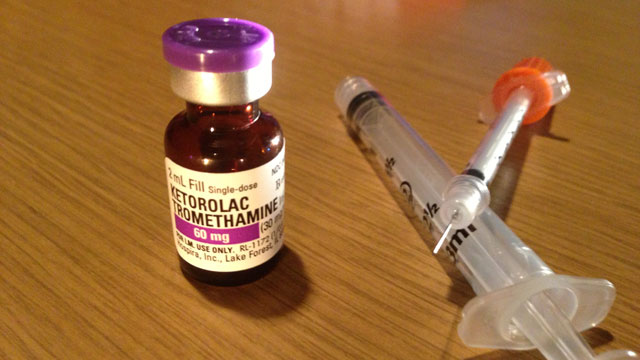
In the coming year, the NCAA hopes to establish new guidelines and legislation for the use of painkillers by amateur athletes during competitions.
“We must shift the culture on painkillers,” NCAA chief medical officer Dr. Brian Hainline said. “I think the culture now that it’s too easy to give a pain medicine. It’s too easy when an athlete is sore, to say well, why don’t you take this, you’ll feel better before the game.”
Hainline’s statements come on the heels of a FOX31 Denver investigation that proved through purchase orders and lawsuits that major college sports programs across the country have been buying thousands of doses of numbing agents, narcotics and a controversial post-operative pain injection called Toradol or Ketoralac. Toradol is categorized as nonsteroidal anti-inflammatory, but its fast-acting pain relief has made it a popular drug to take during and before competition. In a special report “Masking the Pain,” FOX31 Denver found the University of Southern California, Ohio State, Oklahoma and Louisiana State have utilized Toradol in the locker room. Plus, every big college program in Colorado — Colorado, Colorado State, Northern Colorado and the Air Force Academy — have been prescribing and buying Toradol and other painkilling medications for players.
PREVIOUS REPORT: Masking the pain: The trouble with Toradol in college sports
New records from the University of Oklahoma prove that since 2012, student-athletes were given 4,086 doses of Toradol. The distribution covered athletes in nearly every men’s and women’s sport: baseball, track, gymnastics, tennis, basketball, wrestling, rowing, softball and volleyball, with football players receiving the most (1,490 doses.) As with most of the other university athletic programs FOX31 Denver contacted, Oklahoma does not have written policy on the use and administration of Toradol nor a broader policy on the use of painkillers for student-athletes. Neither does the NCAA. FOX31 Denver acquired a copy of the 315-page NCAA rule book used to govern college sports. The pages consisted of items like when a bowling season can start and when a coach can first contact a recruit, but nowhere does it tell a coach or athletic trainer when they can give a student-athlete pain medication. Hainline said that will change in 2016. “We have to do our part of that here at the NCAA. Believe me, we have to take the leadership role and I pledge in doing that, but at the youth level, parents and coaches need to understand — they’re not making a champion by making someone compete in a weekend game,” he said. Changing rules for schools which belong to the NCAA is a complicated process, but Dr. Hainline believes legislation on use of painkillers will follow the same path that concussions followed several years ago. The International Olympic Committee has already come out with a consensus issue devoted to painkillers and 11 sports medicine associations have established some new “best practice” guidelines. Hainline said the first step is to get coaches, team physicians and athletes of all ages to see painkillers as a last resort, not a way to stay in the game.
ORIGINAL ARTICLE: http://kdvr.com/2015/10/04/ncaas-top-doc-tackles-rampant-use-of-painkillers-in-college-sports/